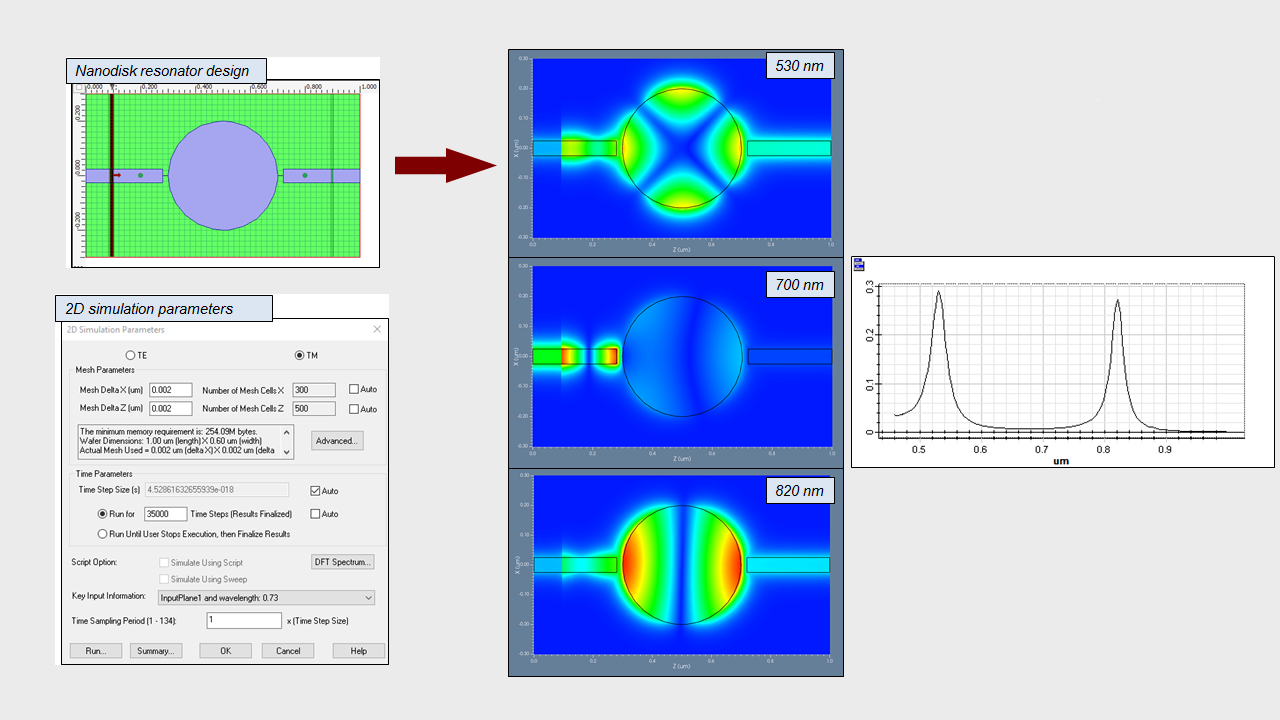Surface plasmon polaritons (SPPs) are waves trapped on the surfaces of metals owing to the interaction between the free electrons in a metal and the electromagnetic field in a dielectric. This application note demonstrates the concept of multi-channel wavelength filtering using a nanophotonic structure that is based on a metal-insulator-metal (MIM) plasmonic waveguide structure with a nanodisk resonator. The simulation settings for a 2D OptiFDTD simulation are reviewed and the filtering characteristics based on the power spectrum are presented.
Compatibility:


